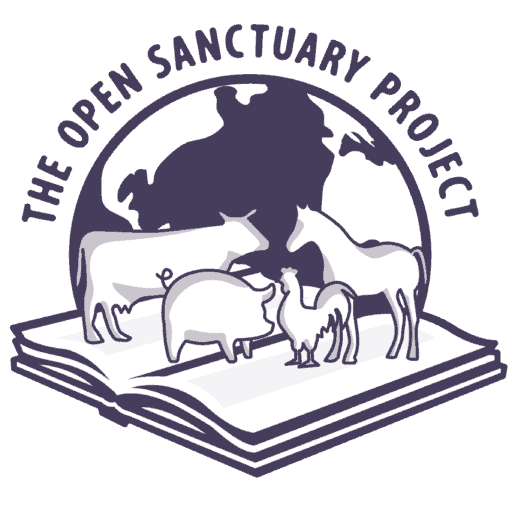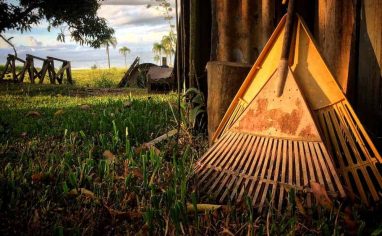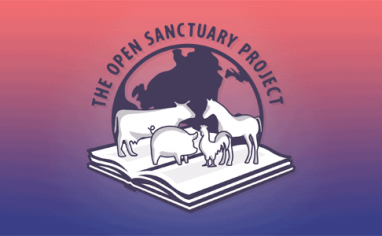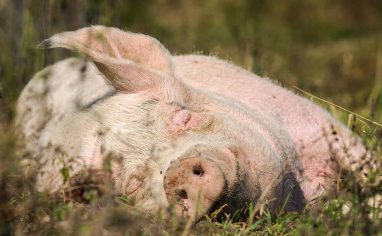
This resource was fully reviewed and updatedA member of The Open Sanctuary Project’s staff has given this resource a full review and provided updates where necessary. by a member of The Open Sanctuary Project’s staff on April 11, 2024.
2021-2024 HPAI Outbreaks
There are currently confirmed cases of HPAI in domesticatedAdapted over time (as by selective breeding) from a wild or natural state to life in close association with and to the benefit of humans birds in the U.S. and abroad. The following checklist is meant to help folks ensure they are taking basic measures to protect their avian residents. For a more in-depth look at Avian Influenza, please refer to our full-length resource here.
HPAI Detected In Domesticated Ruminants In March 2024
On March 20, 2024, The Minnesota Board Of Animal Health (MBAH) announced the first detection of highly pathogenic avian influenza (HPAI) in a domesticated ruminant in the U.S. after a goat kidA young goat in Stevens County tested positive. Soon after, HPAI was detected in cowsWhile "cows" can be defined to refer exclusively to female cattle, at The Open Sanctuary Project we refer to domesticated cattle of all ages and sexes as "cows." at dairies in Texas and Kansas and has since been detected in cows in additional states. This is a developing situation.
The following information was written before detections in domesticated ruminants were made and pertains specifically to protecting bird residents from avian influenza, but it has been updated to reflect the current situation. For more information about HPAI in domesticated ruminants and an overview of states affected, check out our resource here. As experts learn and share more about HPAI in domesticated ruminants, we’ll be sure to offer additional guidance.
HPAI Record-Keeping Template
Looking for a way to keep all these strategies documented at your organization? Download our free HPAI Record-Keeping Template here!
Stay Informed
- Identify reliable sources for information about confirmed cases in your area and more broadly (such as the USDA APHIS site and your state veterinarian for folks in the U.S.).
- Consider setting up Google alerts for HPAI updates in your area.
- Familiarize yourself with regional control efforts so you understand what happens if there is a confirmed case in your area or on your property (while the general response varies region by region and state to state, in the U.S., a confirmed case in farmed bird species almost certainly results in the mandated killing of all birds on the property – to learn more about the legal implications of a positive detection in farmed birds, check out our in-depth resource here).
- Stay current regarding any avian influenza-related restrictions in your area.
- Familiarize yourself with the mechanisms for disease spread so you can identify potential risks not addressed below.
Resident Infrastructure
Disinfectants
When choosing a disinfectant, be sure to choose one that is effective against avian influenza, as well as appropriate for your intended use. You can find more information about disinfectants registered for use against avian influenza at the EPA’s website here (as well as a link to a list of disinfectants). You can also read more about disinfectants and HPAI in Chapter 11 of this manual from The Food and Agriculture Organization of The United Nations. We recommend talking with your veterinarian about which disinfectant products to use, making sure you know what, if any, risks they pose to your residents and how those risks can be minimized or avoided.
Housing
- Prevent contact between residents and wildlife, particularly wild birds, their feathers, and their droppings (by preventing residents’ access to the outdoors or only allowing access in enclosed runs with solid roofing or covered in heavy-duty tarps and sides covered in fine mesh/screen/netting).
- Closely monitor resident living spaces for breaches that could allow wild birds or rodents into the space. Address immediately.
- Address drainage issues, and do not allow residents in outdoor spaces affected by run-off, which could be a source of contamination.
- Clean and disinfect on a heightened schedule (make sure to use a disinfectant proven effective against avian influenza and follow manufacturer instructions). Spaces that offer less robust protection (such as outdoor spaces that are not covered with a solid roof) should be cleaned at least daily, with regular monitoring and removal of potential sources of contamination.
- Keep areas surrounding resident living spaces clean. This includes keeping the walkway up to the entrance clean.
- Ensure bedding reserves are stored securely to prevent contamination from wild birds, rodents, or other wildlife.
- Find safe ways to provide enrichment, opting for enrichment items that carry the least risk of contamination and/or are easy to disinfect (ex. Providing microfiber fleece blankets instead of dirt from the outdoors for dust bathing).
- House avian and mammalian species separately. In general, we think it’s best to house avian residents separate from mammalian residents, but given the current situation with HPAI detections in domesticated ruminants, this is imperative. Until more is known about HPAI in domesticated ruminants, whether or not it can spread from ruminants to birds, and whether or not other domesticated mammalian species will be affected, we strongly encourage folks to house their avian and mammalian residents separately and to avoid giving one access to spaces the other recently spent time in.
- Consider separating waterfowl from other avian residents (but only if you can maintain strict biosecurityMerck Veterinary Manual defines biosecurity as ”the implementation of measures that reduce the risk of the introduction and spread of disease agents [pathogens].” measures and provide safe housing while doing so).
Food And Water
- Protect your residents’ food and water from becoming contaminated. In addition to preventing wild birds, rodents, and other wildlife from accessing food and water sources, make sure feces and wild bird feathers cannot contaminate these sources by bringing them indoors or keeping them under a solid cover.
- Have designated food and water containers (bowls, troughs, etc.) for each bird resident group. If possible, store these within the residents’ living spaceThe indoor or outdoor area where an animal resident lives, eats, and rests. to avoid contamination.
- Clean and disinfect food and water containers at least daily.
- Make sure food reserves are stored securely so that rodents and other wildlife cannot gain access to food.
- Do not allow residents to have access to natural water sources, such as ponds, and do not use these as sources of resident drinking water.
Tools And Equipment
- Have designated cleaning tools for each bird resident space, if possible, and store them so as to prevent contamination (i.e., do not store them outdoors or in spaces wild birds and other wildlife can access or where wild bird droppings could contaminate them. If possible, storing these supplies inside the residents’ living space is ideal). If separate tools are not possible, or if tools leave resident living spaces between uses, disinfect them prior to use.
- Make sure any other tools/supplies that are brought into bird resident living spaces are disinfected prior to coming into bird resident living spaces.
- Do not share or borrow equipment (this includes equipment used in areas other than bird resident spaces, which could act as fomitesObjects or materials that may become contaminated with an infectious agent and contribute to disease spread, bringing the virus onto your property). If you must bring outside equipment in, it must be thoroughly disinfected.
Resident Movement
- Residents should only leave the property for veterinary care.
- Crates/carriers used for movement should be disinfected before and after use.
- Talk to your veterinarian about ways to mitigate risk during vet visits (e.g., avoid the waiting room, use a back entrance, etc.).
New Residents/Intake Procedures
- Recognize the risk of new bird residents introducing the virus to your property, even if they are not showing any signs of illness. With the recent detections in domesticated ruminants, sanctuaries caring for both ruminants and birds must also consider the potential risk of taking in new ruminant residents. Should a new mammalian resident become ill and test positive for HPAI, this could have grave consequences for your avian residents, even if you are following strict biosecurity measures.
- If continuing with active rescue, take measures to protect other residents. Unfortunately, in the event of a positive case in a farmed bird species, typical on-site biosecurity measures will not suffice (in terms of the USDA’s response to a positive case). To protect your avian residents, establish intake procedures that prevent the chance of a new resident bringing the virus to your property. Options include the following:
- Have new bird residents go directly to approved foster homes (that do not already have avian residents). Ideally, these fosters should not also be personnel coming to your property.
- If foster placement is not possible, you might discuss the possibility of testing birds and requiring a negative result prior to taking them in, but make sure you do this in consultation with your veterinarian and that you fully understand the implications of testing.
- Consider suspending intake if offsite housing or testing is not possible.
Staff, Volunteers, And Visitors
General Access To Sanctuary Grounds
- Restrict access to your property (both in terms of vehicles and humans). Keep a log of humans and vehicles entering your property.
- Create a controlled access point (with clear signage) to regulate and track who enters and ensure biosecurity measures are followed.
- Designate a parking area outside the controlled access point.
- Disinfect wheels/wheel wells of any vehicle moving beyond the controlled access point.
- Keep parking areas and main roads/walkways clean.
- Consider requiring that personnel keep a change of clothes and footwear at the sanctuary that they change into upon arrival.
Access To Bird Resident Living Spaces
- Only allow essential personnel in bird resident spaces and keep a log of entry.
- Create and enforce strict biosecurity measures for folks entering bird living spaces, including:
- The use of shoe covers or properly maintained footbaths, following manufacturer’s instructions, and being sure to clean shoes prior to use;
- Wearing disposable gloves and protective coverings such as Tyvek suits;
- Though the risk of HPAI transmission to humans is low, requiring masks may be a good idea.
- Ensure personnel are properly trained on all biosecurity protocols.
- Use clear signage to remind everyone of biosecurity measures (for example, put a sign on the entrance to bird living spaces that lists the requirements of entry).
- If you care for avian and mammalian residents, consider structuring shifts so as to prevent potential disease spread between species. Of particular note, consider setting things up so personnel do not work with domestic ruminants and avian species in the same shift.
- If you have multiple bird resident living spaces and have the capacity to do so, you might also consider having one person care for waterfowl residents and a separate person care for non-waterfowl residents.
Recordkeeping
Be sure to check the regulations in your area as there may be certain records that are mandatory. Otherwise, important records include:
- A written biosecurity plan. If possible, have your veterinarian review, provide feedback, and ultimately sign off on the plan;
- Log of vehicles entering the property – include name of driver, contact details, dates, times, and purpose of visit;
- Log of humans entering the property;
- Log of personnel in contact with bird residents;
- Cleaning logs;
- Resident records;
- Transport logs;
- Log of resident movement within sanctuary grounds (ex. If a resident moves into a new flock).
SOURCES:
Advanced Topics In Resident Health: Avian Influenza | The Open Sanctuary Project
Wild Bird Highly Pathogenic Avian Influenza Surveillance | Food And Agriculture Organization Of The United Nations (Non-Compassionate Source)
Non-Compassionate Source?
If a source includes the (Non-Compassionate Source) tag, it means that we do not endorse that particular source’s views about animals, even if some of their insights are valuable from a care perspective. See a more detailed explanation here.








